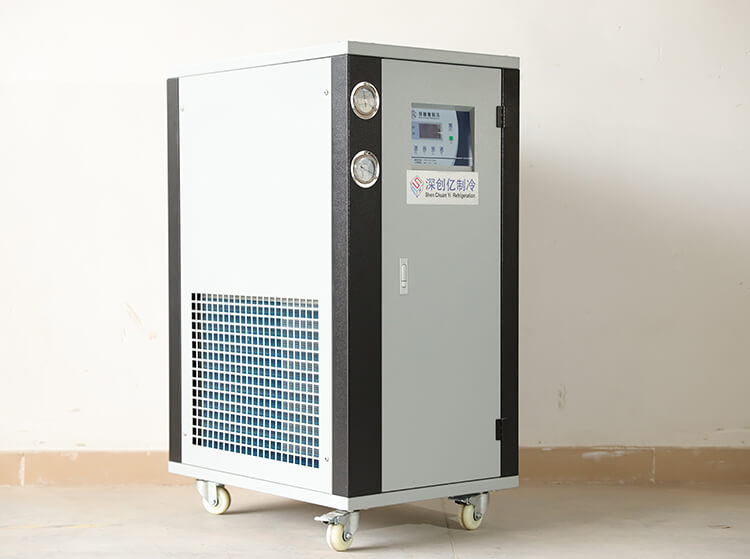Industrial chillers provide controlled temperatures for a variety of applications, such as space cooling and food and drink preservation. As one of the largest energy-consuming components of commercial facilities, the correct operational approach and maintenance procedures should be a top priority. Neglecting the proper protocol could result in reduced system performance, a rise in energy costs and a shorter lifespan for your equipment.
Various factors contribute to a decline in the equipment’s efficiency, including improper operating practices, overlooked maintenance, oversizing and under-sizing. These oversights pose a potential threat to the chiller’s productivity. Let’s see the 3 main causes of industrial chiller problems:
Improper Operating Practices
 The manufacturer’s guidelines should always be followed, as poor operating practices will affect both the chiller’s effectiveness and lifespan. Forcing the equipment to perform something it was not intended for and ignoring the consequences of a certain action will make the chiller more prone to a variety of complications. There is a belief that the higher the flow rate, the more cooling water will be ready for use. This is incorrect, as increasing the flow rate beyond the manufacturer’s recommendation will only reduce the efficiency of the chiller. It could also increase the rate of corrosion in the tubes, resulting in early tube failure. Improper operating practices often go unnoticed, as chillers manage to soldier on. However, it would be a mistake to allow these practices to become the norm, as this will cause much bigger and more expensive industrial chiller problems in the long run.
The manufacturer’s guidelines should always be followed, as poor operating practices will affect both the chiller’s effectiveness and lifespan. Forcing the equipment to perform something it was not intended for and ignoring the consequences of a certain action will make the chiller more prone to a variety of complications. There is a belief that the higher the flow rate, the more cooling water will be ready for use. This is incorrect, as increasing the flow rate beyond the manufacturer’s recommendation will only reduce the efficiency of the chiller. It could also increase the rate of corrosion in the tubes, resulting in early tube failure. Improper operating practices often go unnoticed, as chillers manage to soldier on. However, it would be a mistake to allow these practices to become the norm, as this will cause much bigger and more expensive industrial chiller problems in the long run.
SOLUTION: One way to ensure the constant performance of a chiller is to train personnel in both operating and maintenance practices. This would allow them to identify any problems before they become widespread. Also, introducing a chiller maintenance program will guarantee equipment preservation.
Disregarded Maintenance
Ignoring the proper maintenance procedures will affect your chiller’s performance. Poor upkeep can cause the equipment to consume more energy during the cooling process. SOLUTION: Effective chiller maintenance starts with keeping a valuable diagnostic tool such as an operating log. This will allow you to keep track of chiller data so that operators can recognize trends in the chiller’s performance. This will also aid maintenance personnel, allowing them to easily locate the underlying cause of any complications. Regularly scheduled inspections should not be overlooked. Daily, weekly, monthly and annual check-ups will help to determine the condition of the chiller.
Oversizing/Under-sizing
When a facility is new or undergoing renovation, a chiller might not be sized correctly. Under-sizing can result in insufficient airflow, which means that the chiller will not be able to achieve its full cooling capacity. Oversizing might restrict the low-load operations, which will result in higher operating costs due to excessive cycling. SOLUTION: Study the performance of the existing chiller and the cooling loads it actually serves.
Additional Tip:
One of the best ways to avoid industrial chiller complications is to get top quality and trusted services from companies such as 1Cold. 1Cold is a temperature-controlled environment specialist that excels in industrial chillers and cold rooms. Solving a problem starts with awareness. When managers and operators are aware of the common problems, they can take the proper measures to ensure their equipment is running smoothly and efficiently.
